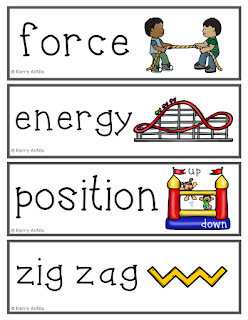A 5 Below just opened in my area. I found the coolest thing there. JUMBO DICE!!!!!!!!!!
There went my self control! But there are so many things you can do with dice ALL year long! So I convinced myself to grab a pair. Who knows, I may be back for more.
So here are some of the ways I plan to use these in my classroom this upcoming school year.
One of the biggest math concepts students will ever learn is an understanding of numbers; what they represent, and how to manipulate them. At the beginning of the year in Kindergarten I spend a lot of time making sure my students understand numbers. We do a lot of this with whole class games and then as the year goes on they also work on number sense a lot in math centers.
So picture this, it's the first week of school; there are procedures to teach, and students who can't focus for more than a minute at a time. So I take out one of the awesome dice. I have my class sit in a circle and we practice the procedure for the game. "We count the number on the top of the die and put our thumb in the air when we've counted it. No calling out, I want to make sure to give turns fairly." So then I watch; the kids who point to the dots and count them, the kids who are able to subitize already (look at a group of objects and know how many there are without counting.) I see some thumbs go up right away, I see others take their time. I keep a paper on a clipboard with each child's name. I watch and observe for a few rounds and then rate them 1-4 on how well they seem to be able to subitize. I vary the way I ask for the answer; I ask them to all whisper it to me (great way to make kiddos feel involved if there is not time to call one everyone, and let's be honest, there rarely is.) I have some students who seem to be struggling whisper in my ear, I have them all respond without talking and just putting up the right amount of fingers. My goal with this class game is muti-fold; teaching procedures, assessing who is a strong counter, who is able to subitize, and who is struggling with these concepts. We will play this game a lot; and I will from time to time explicitly talk about how I subitize (the number 3 on a die is always arranged the same way.)

When they get good at being able to subitize to 6 we bring in a second die. Kiddos start to do mental math as they look at a group of 3 dots on one and 2 dots on the other and create a group of 5. When we get a double I have them put their arms in the air and do a silent cheer. As the year goes on when we get a double we also talk about what happens when we add those two numbers together.
One of the most challenging mathematical concepts for me to teach and my students to learn each year is comparing numbers. They need a lot of practice with the vocabulary and the concept. I bet you're thinking, hey, we could compare quantities with those new dice. :) I'm right there with ya! This will be very similar to the game at the beginning of the except we are using two dice and comparing. There are so many ways to simplify this or challenge your students with just two dice.
1. The teacher rolls 2 dice and ask the students which die has fewer, or more dots.
2. The teacher rolls one die and ask the students what numbers the other die would have to be to be fewer (or more). Then I would have students take turns rolling the second die until we came across a number we were looking for. (For example if I rolled a 4 and I asked for a quantity more than 4 the students would keep rolling until someone rolled a 5 or a 6.
3. The teachers rolls one die and have the students take turns rolling until they find the quantity one fewer and one more.
I spoke briefly about addition a bit ago, but this is a great way to get the kiddos learning their addition facts fluently. For addition I would start off doing the game with them. For this game students all have a dry erase board and marker. I roll the two dice, students write the sum. As we get into addition more, students write the addition equation. Once a fair deal of my students are successful with writing the equations they get to do this as a center. (I remind them of how much I treasure these awesome dice and that they should not have pencil marks, or sticky hand prints on them.) Students will roll the dice and write the addition equation on their recording sheet.

And just when you thought, "I have to stop reading and get myself some dice, there's more. You can uses these for probability and graphing. The cool thing about rolling two dice is that statistically you will not roll a 2 or a 12 all that often. Your chances of rolling a 7 are far better. Once you have taught it, students can do this as a center on their own. They simply roll the two dice, find the sum and then color it in on their graph. They play until they have filled up one of the columns on the graph.
For these dice resources please click on any of the pictures above.


































